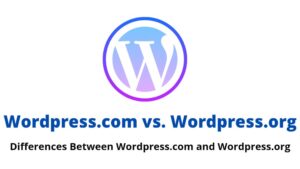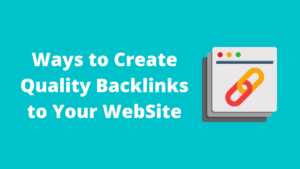8 Website Optimization Strategies To Boost Conversions

Search engine optimization (SEO) has become key in the world of digital marketing. Without optimizing your website for search engines, your target audience may never be able to find it when they search the internet.
Now that competition is stiff among business and website owners, only those with good SEO can attract more traffic and convert those visitors into customers.
You see, optimization doesn’t end with being present on the results’ first page. As a business owner rather than an editorial blog, you want to convert your site visitors to customers.
And this article will guide you on how to go about that: optimizing your website to boost conversions.
Reasons why you must optimize your website
There are many reasons why you should optimize your website. We discuss a few here.
1. To gain more traffic organically
Traffic can be gotten without SEO. Via paid advertising (PPC), you can have your website placed at the top of the search engine results page (SERP). But you have to pay for it! The average business spends about 1% of its revenue on ads. So if you rake in a million, you’ll be spending $10,000 to advertise. That’s good money you could have used on something else.
On the other hand, traffic acquired through SEO is entirely free. While the results may take longer to come, they are more long-term and cost-effective.
2. To make your website useful for your target audience
Imagine a case scenario: you searched for “restaurants near me” and got a miscellaneous results page containing content on real estate, news, sports, law, etc. You’d be frustrated.
Google uses hundreds of ranking signals to determine which content finds its way to the first page of the search results. These signs typically aim to find websites and content that offer precisely what the user searched for. By optimizing your website, you use primary and semantic keywords that tell Google that “this is it!”
When it comes to optimizing for conversion, you automatically focus on serving content that leads the site visitor to take action, whether it’s buying a product, placing an order, making a reservation, or joining an email list. So a user who is looking to buy some furniture wouldn’t find just an article on why they should buy one. They’d find a website where they CAN BUY ONE!
3. To convert leads into customers
When people finally visit your website, they may look around and bounce off. That may happen if they didn’t find what they were looking for or it proved too difficult to navigate around.
Optimizing your website requires an eye on user experience. How does your target audience navigate your site, and what do they immediately desire to see? These will spell how and where to use your CTAs, navigation buttons, drop-down menus, email list subscription, blog, social media follow, buy now, etc.
By optimizing your website, you can capitalize on your existing leads by encouraging them to take action — to convert. That happens when they can easily find what they visited your website for.
4. To make your site perform beyond average
Your site is already performing, but it could do better. To grow and expand, you have to perform better. And that’s one benefit website optimization brings to the table.
The average website conversion rate is around 2.5%. By optimizing your website for conversions, you force it to go beyond average, thereby bringing you more revenue and boosting your reputation in that industry.
Steps to optimize your website to crank up conversion
Now we have discussed the benefits of website optimization at length, how do you go about it?
Here is a step by step guide on how to optimize your website for conversion:
1. Analyze what you have
When you first stare at your website, you may not easily detect what requires a change. But when you analyze everything, you begin to see patterns and loopholes.
To analyze your website, you need data regarding user behavior on your website. Google Search Console tracks data, and User Behavior Reports can help you understand what visitors do when they arrive on your site, how they navigate, bounce rate, etc. Once you can see the patterns, such as a CTA that always gets ignored, you’d realize what needs a change.
2. Do an intensive keyword research
Keyword research is at the heart of SEO. But using keywords to rank is now more difficult than it ever was. You can’t just “think up” a keyword you “feel” is relevant anymore. There are tools to help you find keywords. Tools like Moz Keyword Explorer or the free Ubersuggest will help you find long-tail keywords related to your niche.
Long-tail keywords are crucial as they help you target user intent more explicitly. For example, “mid-range necklace store” is more specific than “necklace store.” Keyword tools will show you the keywords, their search volumes, and how difficult it would be to rank for each keyword.
3. Increase word count and content quality
Word count matters in SEO. Unfortunately, many experts have varying opinions regarding the ideal word count for SEO. According to Search Engine Journal, the ideal blog post length for SEO is 2,100-2,400 words. For Buffer, it is 1600 words.
The thing is, different topics require different lengths as there would be differing volumes of information to cover.
However, the secret is to research whatever topic you want to write on. Look at the top ten articles on the SERP and find their average word count. Your target is to beat that and write a longer blog post!
Why? Writing content longer than your competitors signals the search engines that you have more information to offer the audience. So if your top competitors wrote a maximum of 1500 words on a particular topic, aim at least that or higher.
However, you want to ensure you’re writing quality, engaging content to keep readers on the page. When Google realizes users stay longer on your page, they tend to rank it higher. A high bounce rate due to non-engaging content will cause the exact opposite.
4. Optimize your website for mobile
Google has clearly stated that websites optimized for mobile will be ranked first before others that are not. More people now access the internet via their smartphones, so if you do not optimize your web layout for their screens, they won’t have a positive user experience. And Google doesn’t want that. This involves re-analyzing your site’s front-end, UI, responsiveness, etc.
Since this optimization step is somewhat techy, you may want to look towards acquiring staff skilled in software development. Offshore tech teams are typically more cost-effective, like when you acquire staff augmentation Argentina, for example. Such experts can work with your in-house employees to adjust your website’s mobile-friendliness and other techy areas of your optimization journey.
5. On-page SEO
On-page SEO is the first, simplest, and crucial step for optimizing a web page. It involves things like headlines (H1, H2, H3, etc.), URLs, and meta tags.
It’s important to use your primary keyword in your headline and also in the introductory paragraph. Then use it around in the rest of the content and in one or two subheaders where appropriate. While some SEO experts say you should aim for about 1-2% keyword density, always ensure you fit the words as naturally as possible to avoid making the content look stuffed.
Never forget to use latent semantic indexing (LSI) keywords as they help Google have a wholesome idea of what your website is about. For example, If your primary keyword is “real estate,” LSI keywords may include “real property for sale,” “rental property,” “sell a house fast,” etc.
Also, ensure you include as much context as possible for each keyword to enable Google to understand what you are talking about. It wouldn’t help to place a keyword with no sentence backing it up to give it meaning.
6. Do off-page SEO
Search engine optimization doesn’t end on-page. Quality content is golden, but you must back it up with external means through actions like guest posting, brand mentions, sharing to social media, and influencer marketing.
This form of exposure will increase the reputation of your content, forcing Google to consider it credible information.
7. Vamp Loading speed
High loading speed is crucial to boosting conversion rate. A website that responds slowly would discourage users from proceeding with their purchase or whatever action they desire to take. They would likely bounce off to somewhere else where they can obtain the same product or service more quickly.
Of course, you just wouldn’t want to waste time navigating a site that takes forever to load.
8. Do high-quality link building
Content is king! But with so many amazing content pieces out there, which of them gets to sit on the throne — at the top of Google? One that the search engine regards as most credible! And you achieve that when many other websites link back to your site.
Getting quality backlinks typically takes time and effort, but the results are massive. Other bloggers and social media influencers can help you by incorporating your URL into their content.
Conclusion
SEO is more complex than ever because more and more competitors are fighting for a limited space. It takes those who can consistently go through the above steps to grab that space. To boost your site’s conversion rate and revenue, SEO is key.








